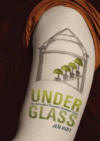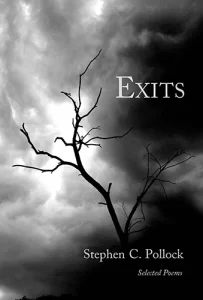Under Glass
For the uninitiated reader, greenhouses offer an organic simplicity in which glass filters sunlight and soil keeps different plants in calm synchronicity. But the trained, dedicated eye of Jen Hirt in her debut memoir Under Glass yields more. For Hirt, the scion of an Ohio greenhouse dynasty founded by her great-grandfather in the 19th century, these glass panels, and everything within, signal a family’s and family business’ demise.
For the uninitiated reader, greenhouses offer an organic simplicity in which glass filters sunlight and soil keeps different plants in calm synchronicity. But the trained, dedicated eye of Jen Hirt in her debut memoir Under Glass yields more. For Hirt, the scion of an Ohio greenhouse dynasty founded by her great-grandfather in the 19th century, these glass panels, and everything within, signal a family’s and family business’ demise.
The book opens in the aftermath of this collapse. From there, Hirt shuffles time across the twelve-essay memoir, deploying the image of the greenhouse and memories of her family’s own to obliquely illuminate her past. For example, in “Ricinus Communis,” she depicts her father’s mission to cultivate castor beans. Simultaneously, she juxtaposes her own conflicted emotions toward her father with lyrical depictions of the poisonous ricin within the bean: “Such chaos beneath the smooth shell, where the white pulp … when distilled and ingested, can dissolve a circulatory system in twelve hours.” She offers occasional, welcome glimpses of the financial friction and rust-belt malaise (a neighbor, “is Midwest poor, unhappy, strung out”) that surround her, but always returns to her central images of the controlled natural world.
Not surprisingly, Hirt’s language broils with passion when she investigates the earth. Each essay possesses multiple, startling images of plant life. In her hands, a simple glance to a row of planters brings “red buds crowning into the evening dusk.” She imagines George Washington’s quest for pineapples at Mount Vernon in “Controlling The Light,” mingling Washington’s excitement with her own: “They were so strange, each one a platypus of fruit, a body like a pinecone, a stem like a spiny desert yucca, sweet golden flesh, and huge.” The smallest objects in Under Glass take on totemic resonance for Hirt. She imagines herself royal when encountering oranges: “I thought they were for me. I was Caesar. I was Victoria.” In these images, the reader gets her fullest view of Hirt: intense, devoted, and protective of the past.
Hirt’s prose, however, flounders in depicting the surrounding human drama. She paints her mother’s struggle with Multiple Sclerosis in platitudes: “She is a classic co-dependent … disease taking hold, menopause sweeping through.” She delivers family watermarks and legacies in monotone, struggling when she turns from the greenhouse to the family home. Audiences who demand a memoir in which the characters provide the nexus of emotion should look elsewhere.
Despite its flaws, the zeal of Hirt’s vegetative tunnel vision imbues Under Glass with a singular energy. She does not employ conventional memoir strategies of gradual self-discovery and universal sentiment. Instead, she prefers to detail dirt and planters and vines. That these earthly elements form the center of any memoir compels. That Hirt builds an intensely recalled, often vividly described memoir from these materials inspires. For fans of natural history, Hirt’s work supplies inimitable stories of a life devoted to what flourishes in the spaces between dirt floors and glass roofs.





